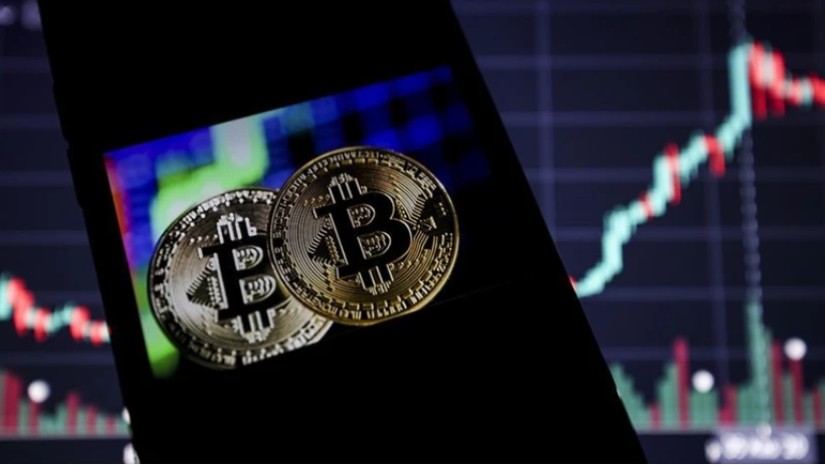Bitcoin rose to $50,000 Monday for the first time in two years, fueled by a rush of new-investor enthusiasm and growing anticipation over a cryptic-sounding event known as “the halving.”
Bitcoin, the world’s most popular cryptocurrency, dipped back into the high 40s on Tuesday, snapping seven straight days of increases, and it remains far from its all-time high of around $69,000. But bitcoin has staged a remarkable comeback over the past year and half, climbing more than 200% from its 2022 low of $16,000.
There are a few key forces forces driving the latest bitcoin euphoria, including an influx of money from investors in newly launched bitcoin exchange-traded funds and excitement over the halving, when the rate of bitcoin production is slashed.
“Now that $50,000 has been topped, $69,000 followed by $100,000 look achievable in 2024 as the narrative switches from the ETFs to the upcoming halving,” said Antoni Trenchev, the co-founder of crypto lender Nexo Capital. “Which is exciting because if history rhymes, the next 12-18 months is going to be a scorcher for crypto.”
The halving hype
The halving, also called the “halvening,” is a foundational concept in the bitcoin philosophy.
Put simply: The halving is a feature in bitcoin’s infrastructure that automatically reduces the rate of new coins entering circulation. It takes place roughly every four years and, in theory, pushes the price of bitcoin higher.
To understand how it works, you have to wrap your head around the central idea of bitcoin as a decentralized asset — that is, one whose value is not controlled by a central bank or other institution but rather by a vast peer-to-peer network of powerful computers that audit all bitcoin transactions in a complex, power-intensive process called mining.
The people behind those networked computers are rewarded for their work in bitcoins.
Every four years or so, however, the number of bitcoins a miner (or auditor) receives gets cut in half.
There are a few reasons why.
Bitcoin is, by design, a finite resource — there will only ever be 21 million coins in circulation, and that scarcity is key to its value proposition, according to advocates. (Though critics say such manufactured scarcity doesn’t create any real underlying value.)
Cutting the reward in half every few years helps control against inflation while also incentivizing miners. In theory, as the inflation decreases, and bitcoin become more scarce, the price will increase.
“Every halving has historically resulted in some sort of bullish price action,” said Gareth Rhodes, former deputy superintendent at the New York State Department of Financial Services, who is now the managing director at research and advisory firm Pacific Street. “Which makes sense, because you expect with more demand constraints that prices increase.”
In 2020, the reward went from 12.5 bitcoin to 6.25. This year, likely in April, it will go from 6.25 down to 3.125.
Ready the bulls
Investors have good reason to be fired up, if they have the stomach to handle the short-term volatility that comes with crypto.
In the two-year period before and after bitcoin’s first halving, in 2012, there was about a 30,000% price increase, Rhodes says. In 2016, it was about almost 800% over that two-year period; for the 2020 halving, investors saw a 700% gain.
The imminent bitcoin halving is setting up a grand chess game in the markets, Henry Robinson, co-founder of Decimal Digital Currency, said in an email. “Sentiments are bullish, especially in the long term, but the psychology around such a significant event can create major volatility.
“We may see exuberant bullish action, dramatic sell-offs, or both, before and after the halving as market participants roll into and out of their halving bets,” Robinson added.
The timing of this year’s halving is also significant, coming just a few months after the US Securities and Exchange Commission approved the first spot bitcoin ETFs. Since nine of those funds launched on January 11, they have brought in about $2.8 billion in total net inflows, led by BlackRock and Fidelity, according to Bloomberg.
“The last month was crypto in a nutshell,” says Trenchev. “Those investors who bought Bitcoin ETFs at the recent low of $38,500 are sitting on a 30% gain, whereas those who bought at $49,000 on January 11th have had to endure a 20% plunge and a baptism of fire. Welcome to crypto, it’s not for the faint-hearted.”
Source: CNN
















